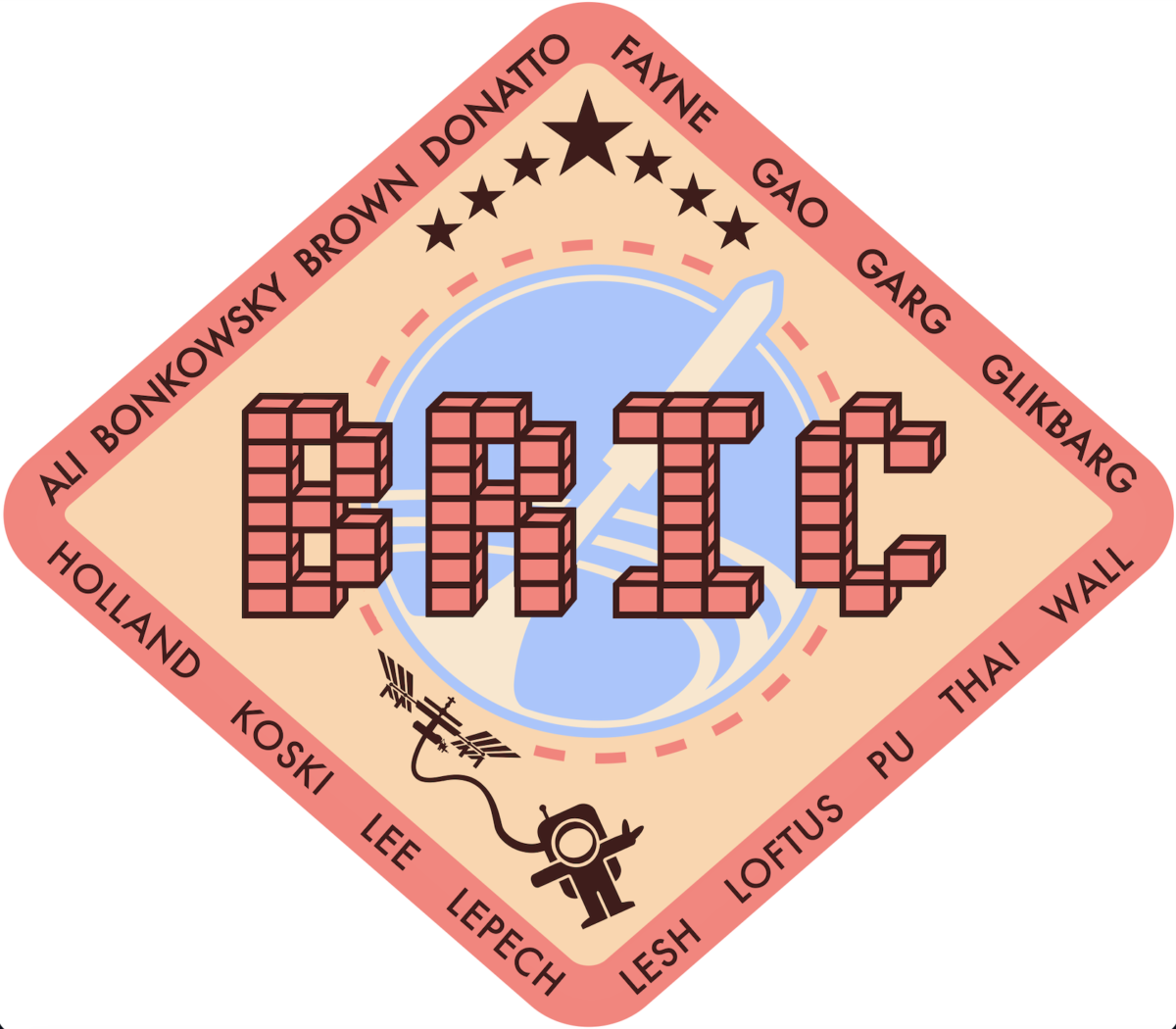Stanford’s Student Space Initiative (SSI) will send its experiments to the International Space Station in 2022 as part of NASA’s Student Payload Opportunity With Citizen Science program. They join four other schools –– Arkansas State University, Columbia University, University of Idaho and University of New Hampshire at Manchester –– in conducting research focused on bacteria resistance or sustainability.
SSI’s Mars Bricks subteam, co-led by Phoebe Wall ’23 and William Koski ’19 M.S. ’21, plan to test how microgravity and zero-gravity affect the formation and durability of a concrete substitute material called Bio-Bound Soil Composites (BSC).
“We are developing a technology to create bricks out of existing dirt on Mars,” Wall said, adding that their “very economical and simple to manufacture” design sets them apart.
BSC, which contains a type of protein commonly used in medicine called bovine serum albumin, will allow for the microscopic binding of lunar or martian soil and form solids, such as bricks.
“The crucible of space requires us to design circular economies, think about ‘cradle to cradle’ systems and use very little energy,” said Michael Lepech, an SSI faculty advisor and civil engineering professor who, alongside NASA’s David Loftus, discovered the BSC that the Mars Bricks team uses in their project.
Building on protein powder and Martian regolith (unconsolidated rocky material) research performed in collaboration with Stanford’s Blume Earthquake Laboratory and NASA’s Ames Research Center, SSI’s experiment in the International Space Station will include 24 “miniscule-sized” bricks studied over 30 days.
Upon arrival on the space station, 12 valves will automatically operate and infuse the BSC dirt compound with water. Dehydrating the solution will activate the protein to stick with the dirt and create a version of concrete, allowing the SSI team on Earth to analyze how zero-gravity affects the brick formation process.
“The more [protein] structures there are, the stronger the materials,” Koski said, explaining that the team wants to analyze how different environmental conditions impact the creation of these solid materials.
In preparation for the launch, NASA has awarded the 13-member Mars BRIC group, a subteam of Mars Bricks dedicated entirely to this project, up to $20,000 to purchase equipment to study the materials and how they might be utilized for habitat construction on other planets and the Moon.

Wall and Koski hope that data collected from this experiment will aid future space researchers to create habitable environments on Mars and other terrestrial surfaces with “in-situ resource utilization” (ISRU), a technique of extracting raw resources already present on a planet or moon.
Andrew Lesh ’20 currently serves as the systems lead for this research endeavor. He founded SSI’s Mars Team a few years ago, which oversees several subcommittees, including the Mars Bricks group.
The bio-bound soil composite material, Lesh explained, can be “directly applicable towards any kind of granular soil,” including lunar regolith and even Earth’s dirt and beach sand. It could be a possible sustainable alternative to normal concrete.
Lepech agreed, adding that “the materials that we are developing for upcoming long duration space missions may someday become the most sustainable building materials used here on Earth.”
Lesh added that because the water used to construct the brick does not become part of the structure, it can be used over and over again. “That is why NASA and the government is really interested,” Lesh said. “This is helping combat climate change and it is not just a fun space thing.”
On Earth, the materials could be used to construct temporary shelters for those in need around the globe. Currently, pouring water over the substance dissolves it, though Wall said that this could be an advantage. “We could build structures very quickly in areas like refugee camps,” they said. “Those buildings can also be taken down with little environmental impact.”
Additionally, a critical part of the NASA collaboration is an emphasis on citizen involvement and outreach. Along with submitting their findings to scientific publications and presenting at conferences, the Mars Bricks team will partner with the Chabot Space and Science Center in Oakland to introduce live educational workshops aimed at six to 12 year olds. In addition, the group intends to engage with the San Mateo County Office of Education to develop a science curriculum with an emphasis on this experiment.
Perhaps the most direct “citizen” contribution to the Bio-Bound Soil Composite project will lie in several East Palo Alto high school classrooms, Wall said. Under supervision from the Mars Bricks team student-leaders, the high schoolers will help make BSC bricks that serve as the control group, identical to the 24 samples orbiting around Earth for 30 days. After conducting CT scans of the classroom samples, Wall, Koski and their team aim to partner with the Girl Scouts to help analyze those images and compare the impact of Earth’s gravity and the zero-gravity of space.
The group leaders said this opportunity has allowed them to find new resources to produce a space project while educating the younger generation about their research.
“If it hadn’t been for NASA,” Wall said, “we never would have had $20,000 to send something up to space.”
Contact Tom Quach at tomquach ‘at’ stanford.edu.
